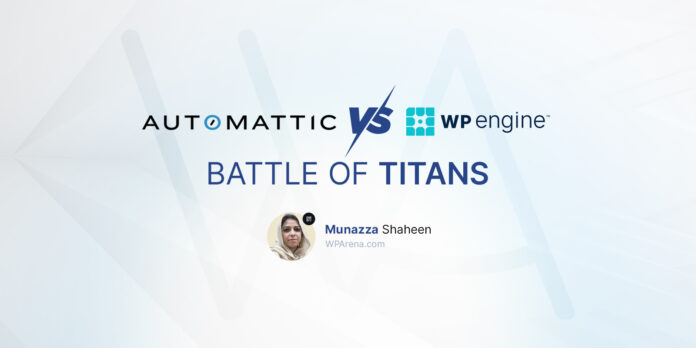If you are an online retail shop owner, then you have probably considered reaching a much greater audience outside of your country. Of course, not every region you target will have people speaking English. In fact, a huge number of your potential customers don’t know English.
There is an easy solution to this problem which is making your site multilingual. This article will discuss the pros and cons of multilingual plugins, their types, and some popular examples.
Website Localization Services
Localizing your website for different demographics is probably the best option out there. There are a myriad of ways to have your website available in multiple languages, but none comes close to the precision and accuracy that a translation and localization agency can offer. If you do not have a budget to approach a localization agency just yet, starting out with free multilingual plugins is probably the best route for you. But when the time comes that your business or blog has already generated a dedicated number of followers you would need to up the ante.
Furthermore, if time is not a luxury for you and money is something you have in abundance, then, by all means, you are certainly welcome to explore options that do not require too much time and effort. The dedication required to translate a whole website—from your service pages to your blogs, is no small feat. Moreover, if you factor in the localization process then you would not even have any time to write new blog articles for a while or even run your business. For this reason, a lot of busy business and website owners are looking for quality website translation services that can deliver their needs in a timely manner. It is also an added convenience that a lot of these agencies have a strict quality assurance process and will guarantee the translation work for even a year after it has been delivered.
After all, your customers are your bread and butter, and spoiling them with content that is available in their native language is something you should be doing.
Advantages & Disadvantages of Multilingual Plugins
Obviously, multilingual plugins have their advantages and disadvantages. For starters, not all plugins can translate every part of your website. Some of them work well with posts but are powerless when it comes to meta description. In addition to that, a lot of plugins are not free and will require your money and effort to be put into them.
As opposed to multilingual plugins, there are the so-called multi-sites. While a plugin translates your website and stores all the data together in one media library, going multisite means having several versions of your site with data stored in separate media libraries and sites located on different domains. Multisites have their own advantages such as increased performance, more language control, and more.
In order to understand the disadvantages of multilingual plugins, we should compare them to multisites. There is a third option which is a combination of multilingual plugins and multisites, which might seem like the best choice, but every case is different and depending on your needs, some things will work for you better than others.
The first big question is your budget. If you have a buck to spare, then purchasing a good multilingual plugin is the best way to go. Alternatively, you can spend time developing a proper multisite, but it will probably take more effort from your side. If your budget is low or you have no budget at all, you can consider using a free plugin. However, they are not always functional and need to be treated with caution. As a last resort, let your visitors use Chrome to translate your web pages.
Compared to multi-sites, multilingual plugins often lack in performance. The size of your website also matters. If it is a small one, you should be good with a plugin, but if it is medium or large, then going multisite is your best bet.
For SEO optimization, it is okay to use either a self-translate plugin (we will discuss what that means later) or go multisite. Remember never to use an auto-translate plugin if you want your content to be SEO optimized.
And last but not least, if you think that you might want to drop a language in the future, multisite will definitely be easier in this sense. With multisite, you will only have to delete the version in the language you no longer need.
After considering all of these aspects, you can be sure about your choice. Obviously, plugins are great in many senses. You might want to opt for a multisite, but that will only be required if you have high standards and the resources to meet those standards.
Types of Multilingual WordPress Plugins
Now that you’ve realized that you absolutely need a multilingual plugin on your site, it’s important to understand their types. There are two kinds of these:
- Auto-Translate: These plugins rely on online translators to convert your content into a different language at the click of a button. They are often unreliable in the sense that most of the time machine translations are incomprehensible and lack the quality of human translations.
- Self-Translate: These plugins require you to do the translation yourself (or hire someone to do it for you). The process of entering the information first in English and then in other languages is obviously more time-consuming, but it produces the best results out of the two.
The auto-translate approach is much faster and easier than self-translate. The latter one is also potentially more expensive. However, if you want to look professional, you will have to opt for self-translate plugins because this guarantees that there won’t be any gibberish text on your site.
When choosing the right plugin for your website, you must also consider whether this plugin translates every bit of content. Along with the posts themselves, this also includes widgets, taxonomies, theme strings, plugin strings, menu items, custom fields, page builder content, and more.
Tools To Help You
If you choose the self-translate transition path, you will need some good tools to help you translate your content. Here are three to check out:
- Grammarly: A free online tool to check your English grammar, spelling, and punctuation. It can be used to adapt your content to the American, British, Canadian, or Australian English standards.
- The Word Point: An online translation and localization service to have your content translated by professionals. You can choose from 48 languages.
- Polish My Writing: An online spelling and grammar checker which supports such languages as English, Spanish, German, French, and Portuguese.
Popular WordPress Plugins
Now that we have discussed all the aspects of multilingual plugins, it’s time to look at some of the popular examples. We will look over four plugins: WPML, Polylang, Weglot, and TranslatePress.
1. WPML
WordPress Multilingual Plugin, commonly abbreviated as WPML, is the most popular plugin on the market. It works with over sixty languages and you also have an option to add your own language variants.
One of its greatest advantages is that you can choose to place your translations either on the same domain, a sub-domain or an entirely different domain. This allows for more versatility and functionality, and even makes it somewhat similar multisites.
WPML works with both auto-translate and self-translate. If you want to auto-translate, you can either sync the plugin with ICanLocalize and Cloudwords for one of the tools to translate your content, or you can use WPML’s Advanced Translations Editor.
If you want to self-translate, you can either do it yourself or assign your site visitors the role of translator and let them enter their own translations for your site.
In terms of cost, the WordPress Multilingual Plugin is not cheap, but it’s not the most expensive option either. You can purchase a starter pack or directly upgrade to a more advanced pack with more invaluable features.
2. Polylang
While WPML costs money, Polylang has a free version. Of course, if you want to translate more, you will have to purchase an upgrade which is, by the way, more expensive than WPML. Polylang only allows self-translate, so you will either need to translate everything yourself or hire a professional to do it for you and then input the translated content.
Polylang is quite easy to use and is very similar to the WordPress Multilingual Plugin. It uses the same logic and gives you access to similar features.
It is important to note that you can opt to translate certain posts into certain languages. So, for example, if you want to have one post in English, Spanish and Italian, but another one only in English and Italian, then Polylang will absolutely let you do this. Each translation also gets a unique URL.
Moreover, if you were previously using WPML, you can switch to Polylang through a separate plugin that will assist you in the process.
3. Weglot
This plugin is pretty different from its approach to translating content on WordPress. Its primary focus is on auto-translate, but you have options for self-translate too. The interface is an external cloud one instead of a WordPress dashboard, and the billing is SaaS-style.
The logic behind Weglot is that once you configure it, the plugin automatically translates your whole site and then gives you an option to edit the translations or outsource them to translation services. This means that your site has all the translations from day one, but you will have to thoroughly check the content nonetheless.
Weglot is free, but if you want to get the Pro version, you will have to purchase a monthly subscription which is not very expensive anyway.
4. TranslatePress
TranslatePress can be named a mix between all the previously mentioned plugins. It has automatic translation like Weglot but sticks to traditional WordPress billing like WPML and Polylang.
Once installed, the default self-translate can be changed to auto-translate (by Google Translate) in the settings. The plugin will auto-translate the strings that haven’t yet been manually translated. It also gives you an option to edit the auto-translated pieces.
TranslatePress has a free version or you can pay a one-time fee to purchase the Pro version.
Conclusion
To sum it all up, multilingual WordPress plugins are definitely a great way to make your e-store more accessible to wider audiences. Whether you choose a self-translate or an auto-translate plugin, it is always best to remember that the most important criterium is whether that plugin can translate every bit of text on your website. Check out the plugins discussed in this article and find the best one for you.





